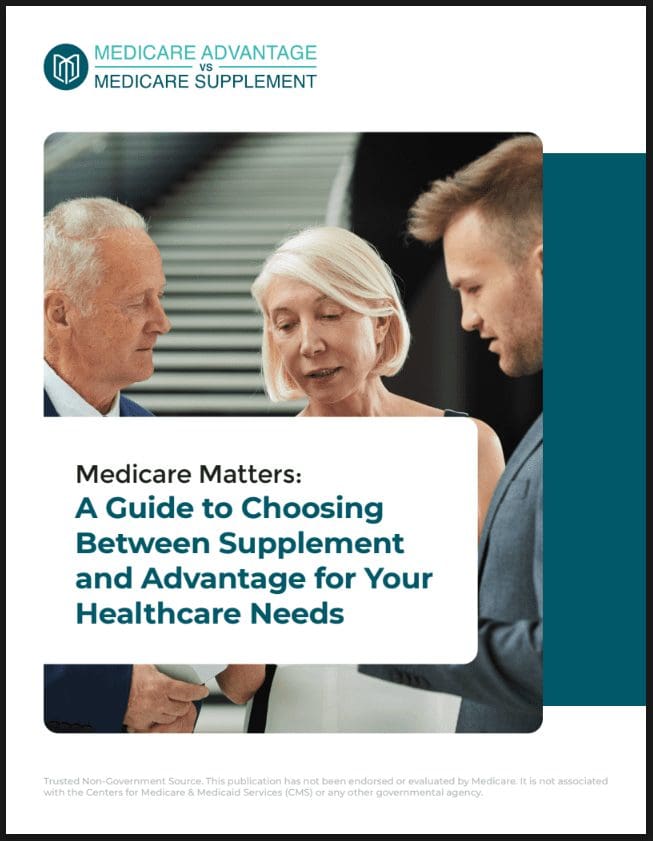Key Takeaways
-
Even if you’ve already enrolled in Medicare, revisiting key details like enrollment periods, coverage types, and cost responsibilities can help prevent coverage gaps or surprise expenses.
-
Medicare in 2025 has introduced important updates, including a $2,000 annual cap on prescription drug out-of-pocket costs, which can significantly affect your budget planning.
Make Sure You’re Enrolled in the Right Parts
There’s more to Medicare than just signing up once and forgetting about it. It’s a layered program with different parts that serve specific roles. Understanding each one ensures you don’t miss essential benefits.
Medicare Part A
This is your hospital insurance. If you or your spouse worked and paid Medicare taxes for at least 10 years, you usually don’t pay a monthly premium. Part A covers:
-
Inpatient hospital stays
-
Skilled nursing facility care (after a qualifying hospital stay)
-
Hospice care
-
Some home health care services
Medicare Part B
This is your medical insurance. Most people pay a monthly premium, which is $185 in 2025. It covers:
-
Doctor visits
-
Outpatient care
-
Preventive services
-
Durable medical equipment
You must actively enroll in Part B unless you’re automatically enrolled because you’re receiving Social Security. Missing your initial enrollment window can trigger late penalties.
Medicare Part C (Medicare Advantage)
This is an alternative to Original Medicare, offered by private companies approved by Medicare. It combines Parts A and B, often including additional services. Just remember that these plans vary, so double-check what is and isn’t covered.
Medicare Part D
This helps with prescription drug costs. In 2025, the Part D program includes a $2,000 annual out-of-pocket maximum, a major change from previous years. That means once you’ve paid $2,000 for prescriptions in a year, your plan covers 100% of your drug costs for the rest of the year.
Revisit Enrollment Deadlines and Periods
Missing key Medicare enrollment windows can cost you money or delay your coverage. Even if you’re already enrolled, it’s worth noting the timing for future changes or adjustments.
Initial Enrollment Period (IEP)
This is your first opportunity to enroll. It lasts for seven months: three months before, the month of, and three months after your 65th birthday. If you miss it without qualifying for a Special Enrollment Period, you may face penalties.
General Enrollment Period (GEP)
If you missed your IEP and aren’t eligible for a Special Enrollment Period, you can sign up during the GEP from January 1 to March 31 each year. Your coverage begins the month after you enroll.
Annual Enrollment Period (AEP)
From October 15 to December 7, you can change your Medicare coverage. This includes switching between Original Medicare and Medicare Advantage or changing Part D drug plans. Any changes made during AEP take effect on January 1 of the following year.
Medicare Advantage Open Enrollment Period
Between January 1 and March 31, if you’re already enrolled in a Medicare Advantage plan, you can switch to another Advantage plan or return to Original Medicare. You can only make one change during this period.
Confirm Medicare Coordination with Other Coverage
If you have additional coverage through a retiree plan, employer plan, or military benefits, make sure you understand how it coordinates with Medicare. This can impact how much you pay and who pays first.
Employer Coverage
If you’re still working past 65 and have health coverage through your job, check with your benefits administrator. In many cases, your employer plan is primary if the employer has 20 or more employees.
Retiree Plans
Some former employers offer retiree health benefits. These plans often work alongside Medicare. However, they may require you to enroll in both Part A and Part B to maintain eligibility.
Military or Veterans Coverage
TRICARE and VA coverage have specific rules. Most military retirees must enroll in Medicare Parts A and B at age 65 to keep their TRICARE coverage.
Understand What’s Not Covered by Medicare
Even with all its parts, Medicare doesn’t cover everything. Knowing these exclusions helps you avoid surprise costs.
Long-Term Care
Medicare does not cover custodial care in a nursing home if it’s the only care you need. Long-term care insurance or Medicaid may be needed for extended nursing home stays.
Dental, Vision, and Hearing
Routine dental exams, eye exams for glasses, and hearing aids are generally not covered under Original Medicare. Some Medicare Advantage plans may include these benefits, but it’s plan-specific.
Foreign Travel
Medical care outside the U.S. is mostly not covered. There are exceptions in specific circumstances, such as emergencies near the U.S. border, but otherwise, you’ll need separate travel insurance.
Review 2025 Cost Updates
Each year, Medicare costs shift slightly. For 2025, here’s what you should keep in mind:
-
Part A deductible: $1,676 per benefit period
-
Part B premium: $185 monthly
-
Part B deductible: $257 annually
-
Part D deductible: Up to $590
-
Out-of-pocket drug cap (Part D): $2,000 annually
It’s also important to review how much you might owe in coinsurance, especially if you’re hospitalized or receive specialist care.
Keep Track of Preventive Services
Medicare covers many preventive services at no extra cost if you meet eligibility guidelines. Make the most of them each year.
Covered Preventive Services
-
Annual wellness visit
-
Flu, COVID-19, and pneumonia shots
-
Cancer screenings (mammograms, colonoscopies)
-
Cardiovascular disease screenings
-
Diabetes screenings and prevention programs
These services help detect issues early and keep you healthier long term.
Check for Income-Related Premium Adjustments
Medicare Part B and Part D premiums may be higher based on your income. These adjustments are based on your tax return from two years ago.
2025 IRMAA Thresholds
-
Individuals: $106,000 and above
-
Couples (filing jointly): $212,000 and above
If your income exceeds these limits, your monthly premiums may include an extra charge known as IRMAA (Income-Related Monthly Adjustment Amount).
If your income has recently decreased due to retirement or other life changes, you can request a reassessment from the Social Security Administration.
Stay Updated on Coverage Notices and Mail
Medicare sends a variety of notices each year, including your “Medicare Summary Notice” and changes to your plan if you’re enrolled in Medicare Advantage or Part D.
-
Read these documents carefully to track your costs and ensure billing accuracy.
-
During fall, you’ll also receive an Annual Notice of Change if you’re in a private plan, showing what will be different in the coming year.
Manage Prescription Coverage Smartly
Even with the new $2,000 out-of-pocket cap, managing your prescription coverage well is key to avoiding higher costs.
-
Use preferred pharmacies or mail-order services when available.
-
Review your plan’s formulary each year during open enrollment.
-
Consider generics or therapeutic alternatives when possible.
Watch for Extra Help Programs
If you have limited income or resources, you might qualify for help paying premiums and drug costs. These programs include:
-
Medicare Savings Programs: Help with Part A and B costs
-
Extra Help (LIS): Assistance with Part D premiums and copayments
-
State Pharmacy Assistance Programs: Available in some states
Check with your state Medicaid office or local SHIP (State Health Insurance Assistance Program) to learn more.
Don’t Forget About Coverage Reviews Each Year
Medicare is not a set-it-and-forget-it program. Reviewing your coverage each year ensures your plan still fits your health and financial needs.
-
Are your doctors still in-network?
-
Have your prescriptions changed?
-
Are you traveling more often?
-
Has your income changed?
All of these can impact whether your current plan is still the best option for you.
A Little Extra Time Now Saves Headaches Later
Staying informed and proactive with your Medicare coverage is one of the best ways to protect your health and your wallet. Double-checking these core details ensures you’re taking full advantage of your benefits, avoiding costly mistakes, and preparing for changes ahead.
If you need professional guidance or want to explore your options more deeply, reach out to a licensed agent listed on this website who can help you personalize your Medicare strategy.









